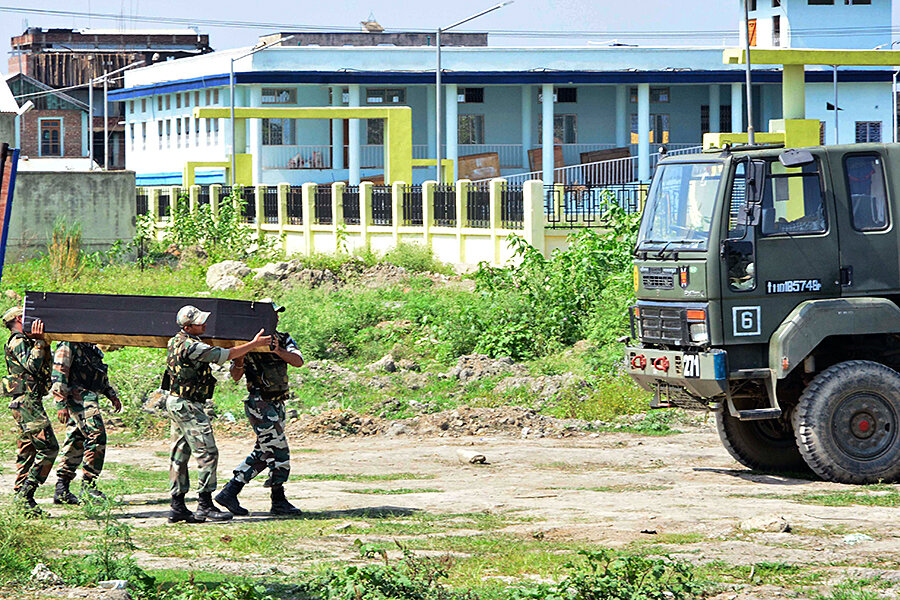Why Indian troops are in 'hot pursuit' of rebels inside Myanmar
The Indian Army attacked a rebel camp inside Myanmar on Tuesday, days after at least 20 of its soldiers were killed in an ambush in India’s restless northeast.
Major. Gen. Ranbir Singh, a senior Army officer, said the operation “inflicted significant casualties” on the insurgents, reports the BBC. Troops reportedly destroyed two rebel camps and killed 30 to 50 insurgents in Myanmar before returning safely to India.
The flare-up in the remote region is largely an Indian affair: The rebels are fighting against Delhi's rule and their targets are mostly Indian officials. While Myanmar has many armed ethnic insurgent groups, none are active along its western border with India.
Tuesday's raid follows the deadliest attack on security forces in the northeast in two decades, according to Reuters. Last Thursday, rebels armed with rocket-propelled grenades and automatic rifles ambushed an Indian Army convoy in Manipur State.
Analysts say that a number of rebel groups recently joined forces to form a new coalition in the northeast. Their alliance has led to a surge in attacks on Indian troops along the border with Myanmar.
In an article for the BBC, Subir Bhaumik, an independent journalist and writer based in Kolkata, wrote that Tuesday’s attack inside Myanmar “may be the beginning of a new phase in India’s counterinsurgency strategy.”
India has tried for years to persuade Myanmar to evict rebels from bases in the thick jungles of Sagaing administrative region – bordering India's Nagaland, Manipur and Arunachal Pradesh – but without much success so far.
While Bhutan and Bangladesh have forced out many of the rebels and killed or captured others, Myanmar has said it could not follow suit because its army is stretched fighting bigger anti-state insurgencies in Kachin, Kokang and Karen regions.
After last Thursday's ambush left at least 20 soldiers dead in Manipur state, Delhi decided to strike back.
Prime Minister Narendra Modi authorized the “hot pursuit strikes,” said Rajyavardhan Singh Rathore, India's junior information and broadcasting minister. He called it a “bold and “much-needed” decision.
"Attacks on Indians are not acceptable,” Mr. Rathore told reporters after the raid. “This should be a message to all countries and organizations who foster terrorism against India, including Pakistan.”
Reuters reports that Mr. Modi has sought to improve relations with neighbors to better tackle cross-border terrorism. But his administration has also repeatedly said it would deal with militants firmly. While Myanmar’s military didn’t directly participate in Tuesday's operation, the two sides were in communication about it, Rathore said.
India’s remote northeast is home to dozens of insurgency groups that are fighting for either greater autonomy or secession. They accuse the Indian government of exploiting natural resources in the region while ignoring economic development.
The Associated Press reports that most of the main rebel groups in Manipur are not engaged in ceasefire talks with New Delhi, unlike those in other northeastern states. Authorities there have struggled for years to bring an end to the insurgency.






